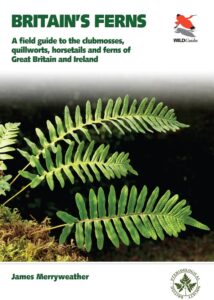 Ferns are among the most ancient plants on Earth. Grouped with their allies (clubmosses, horsetails, quillworts, moonworts, and others) they are commonly referred to as the Pteridophytes – although the precise taxonomy is often, and vigorously, disputed. What is not, however, disputed is that Dr. James Merryweather is an ecologist of particular renown and respect. Wide-reaching in his areas of interest, he is particularly well-known among pteridology enthusiasts for his many books and articles addressing the identification and understanding of these intriguing plants.
Ferns are among the most ancient plants on Earth. Grouped with their allies (clubmosses, horsetails, quillworts, moonworts, and others) they are commonly referred to as the Pteridophytes – although the precise taxonomy is often, and vigorously, disputed. What is not, however, disputed is that Dr. James Merryweather is an ecologist of particular renown and respect. Wide-reaching in his areas of interest, he is particularly well-known among pteridology enthusiasts for his many books and articles addressing the identification and understanding of these intriguing plants.
Dr. Merryweathers’s most recent book, Britain’s Ferns: A Field Guide to the Clubmosses, Quillworts, Horsetails and Ferns of Great Britain and Ireland, has now been published, with support from the British Pteridological Society, by Princeton University Press under their rapidly expanding WildGuides imprint. Covering Britain’s fifty-seven species of ferns, six clubmosses, three quillworts and eight horsetails, this new field guide is being particularly praised for bringing the idenfication and explanations of these often confusing and subtly differentiated plants into a form anyone interested in learning more about them will find accessible.
Would that I were in England right now (as I should be), I would have a copy of this new guide ready-at-hand in my shoulder bag, eagerly seeking every opportunity – and much to the likely irritation of my companions – to uncover the identity of every fern, clubmoss, quillwort, and horsetail that came within view. Alas; my usual sojourn has this year, as have so many other of life’s delights, has been cancelled by the present pestilence. Thus I must simply content myself with intellectually rambling through the Scepter’d Isle’s pteridophytes as presented in the book’s lavish imagery and detailed life histories.
